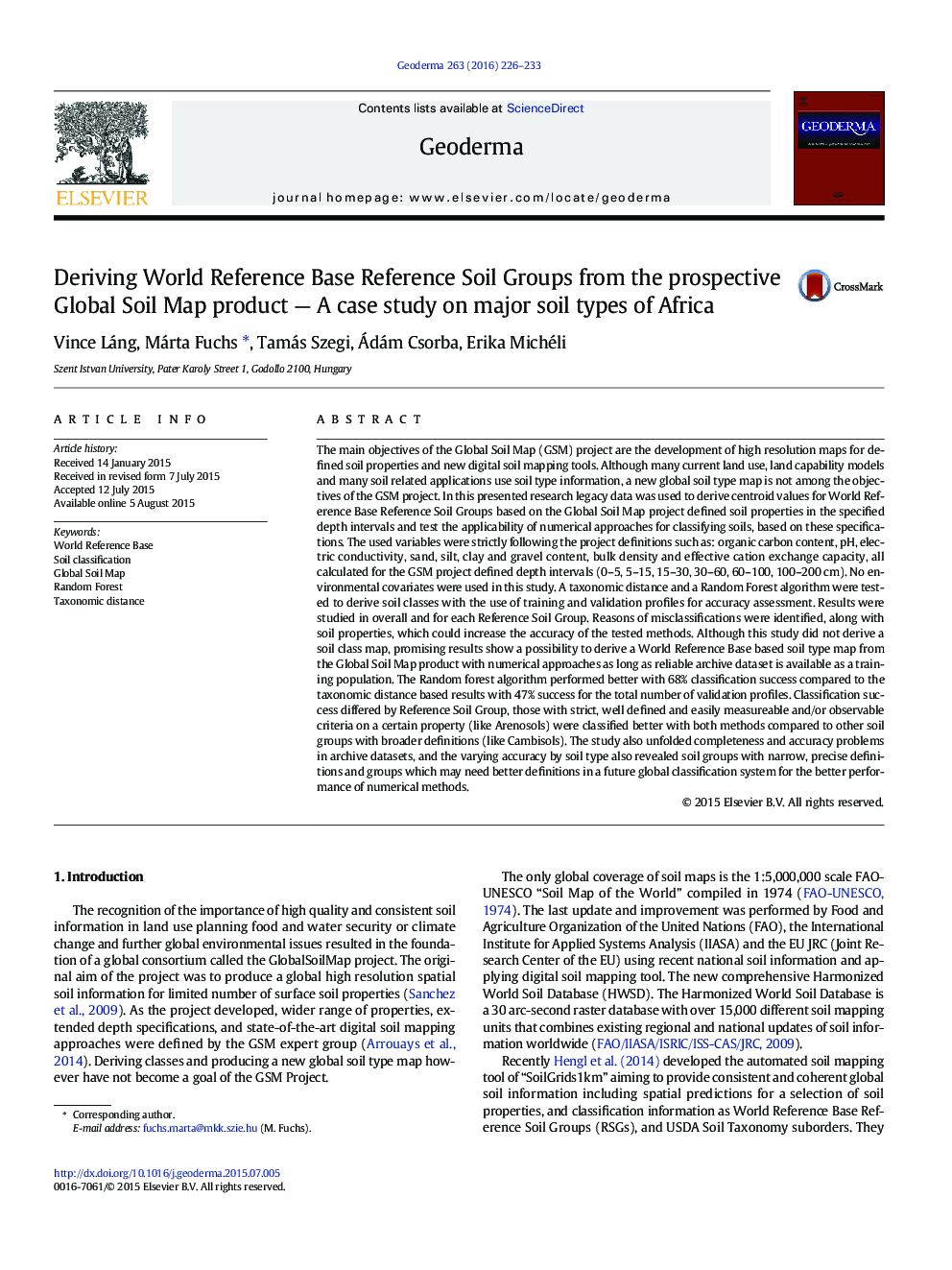| کد مقاله | کد نشریه | سال انتشار | مقاله انگلیسی | نسخه تمام متن |
|---|---|---|---|---|
| 6408483 | 1629453 | 2016 | 8 صفحه PDF | دانلود رایگان |
- Global Soil Map specification based soil type classification
- Taxonomic distance and Random Forest methods were tested for soil type derivation.
- Random Forest over performing distance metrics in prediction accuracy
- Identified issues of archive datasets for soil type prediction
The main objectives of the Global Soil Map (GSM) project are the development of high resolution maps for defined soil properties and new digital soil mapping tools. Although many current land use, land capability models and many soil related applications use soil type information, a new global soil type map is not among the objectives of the GSM project. In this presented research legacy data was used to derive centroid values for World Reference Base Reference Soil Groups based on the Global Soil Map project defined soil properties in the specified depth intervals and test the applicability of numerical approaches for classifying soils, based on these specifications. The used variables were strictly following the project definitions such as: organic carbon content, pH, electric conductivity, sand, silt, clay and gravel content, bulk density and effective cation exchange capacity, all calculated for the GSM project defined depth intervals (0-5, 5-15, 15-30, 30-60, 60-100, 100-200Â cm). No environmental covariates were used in this study. A taxonomic distance and a Random Forest algorithm were tested to derive soil classes with the use of training and validation profiles for accuracy assessment. Results were studied in overall and for each Reference Soil Group. Reasons of misclassifications were identified, along with soil properties, which could increase the accuracy of the tested methods. Although this study did not derive a soil class map, promising results show a possibility to derive a World Reference Base based soil type map from the Global Soil Map product with numerical approaches as long as reliable archive dataset is available as a training population. The Random forest algorithm performed better with 68% classification success compared to the taxonomic distance based results with 47% success for the total number of validation profiles. Classification success differed by Reference Soil Group, those with strict, well defined and easily measureable and/or observable criteria on a certain property (like Arenosols) were classified better with both methods compared to other soil groups with broader definitions (like Cambisols). The study also unfolded completeness and accuracy problems in archive datasets, and the varying accuracy by soil type also revealed soil groups with narrow, precise definitions and groups which may need better definitions in a future global classification system for the better performance of numerical methods.
Journal: Geoderma - Volume 263, 1 February 2016, Pages 226-233
